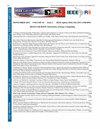Exploring COVID-19 Trends in Mexico during the Winter Season with Explainable Artificial Intelligence (XAI)
IF 1.3
4区 工程技术
Q3 COMPUTER SCIENCE, INFORMATION SYSTEMS
引用次数: 0
Abstract
COVID-19 has become the most significant pandemic in recent years. Today, Mexico has recorded millions of infections and deaths since the pandemic started. Around the world, machine learning methods have been used to understand, predict or develop strategies to manage the virus and the pandemic. Although algorithms provide good results, it is necessary to understand why a model makes specific predictions with a particular data set. To explain this question, we apply Explainable Artificial Intelligence (XAI) in this paper. With this, it is possible to understand the characteristics that influence the model decisions when denoting between deaths and survivors. As a case of study, the positive cases detected during the winter season of 2020-2021 and 2021-2022 were considered. In this season, respiratory diseases increased considerably, and in the study period, they influenced the increase in positive cases and the spread of COVID-19. Preliminary results suggest that age is essential when using a Random Forest model. Preliminary results suggest that age is essential when determining the prognosis of a patient infected by COVID-19 in winter seasons.利用可解释人工智能(XAI)探索墨西哥冬季的 COVID-19 趋势
COVID-19 已成为近年来最重要的大流行病。如今,自大流行开始以来,墨西哥已记录了数百万例感染和死亡病例。世界各地都在使用机器学习方法来了解、预测或制定管理病毒和大流行病的策略。虽然算法提供了很好的结果,但有必要了解为什么一个模型会对特定的数据集做出特定的预测。为了解释这个问题,我们在本文中应用了可解释人工智能(XAI)。有了它,我们就有可能了解在表示死亡和幸存者时影响模型决策的特征。本文以 2020-2021 年和 2021-2022 年冬季发现的阳性病例为研究案例。在这个季节,呼吸道疾病显著增加,在研究期间,这些疾病影响了阳性病例的增加和 COVID-19 的传播。初步结果表明,使用随机森林模型时,年龄至关重要。初步结果表明,在冬季确定 COVID-19 感染者的预后时,年龄至关重要。
本文章由计算机程序翻译,如有差异,请以英文原文为准。
求助全文
约1分钟内获得全文
求助全文
来源期刊

IEEE Latin America Transactions
COMPUTER SCIENCE, INFORMATION SYSTEMS-ENGINEERING, ELECTRICAL & ELECTRONIC
CiteScore
3.50
自引率
7.70%
发文量
192
审稿时长
3-8 weeks
期刊介绍:
IEEE Latin America Transactions (IEEE LATAM) is an interdisciplinary journal focused on the dissemination of original and quality research papers / review articles in Spanish and Portuguese of emerging topics in three main areas: Computing, Electric Energy and Electronics. Some of the sub-areas of the journal are, but not limited to: Automatic control, communications, instrumentation, artificial intelligence, power and industrial electronics, fault diagnosis and detection, transportation electrification, internet of things, electrical machines, circuits and systems, biomedicine and biomedical / haptic applications, secure communications, robotics, sensors and actuators, computer networks, smart grids, among others.
 求助内容:
求助内容: 应助结果提醒方式:
应助结果提醒方式:


